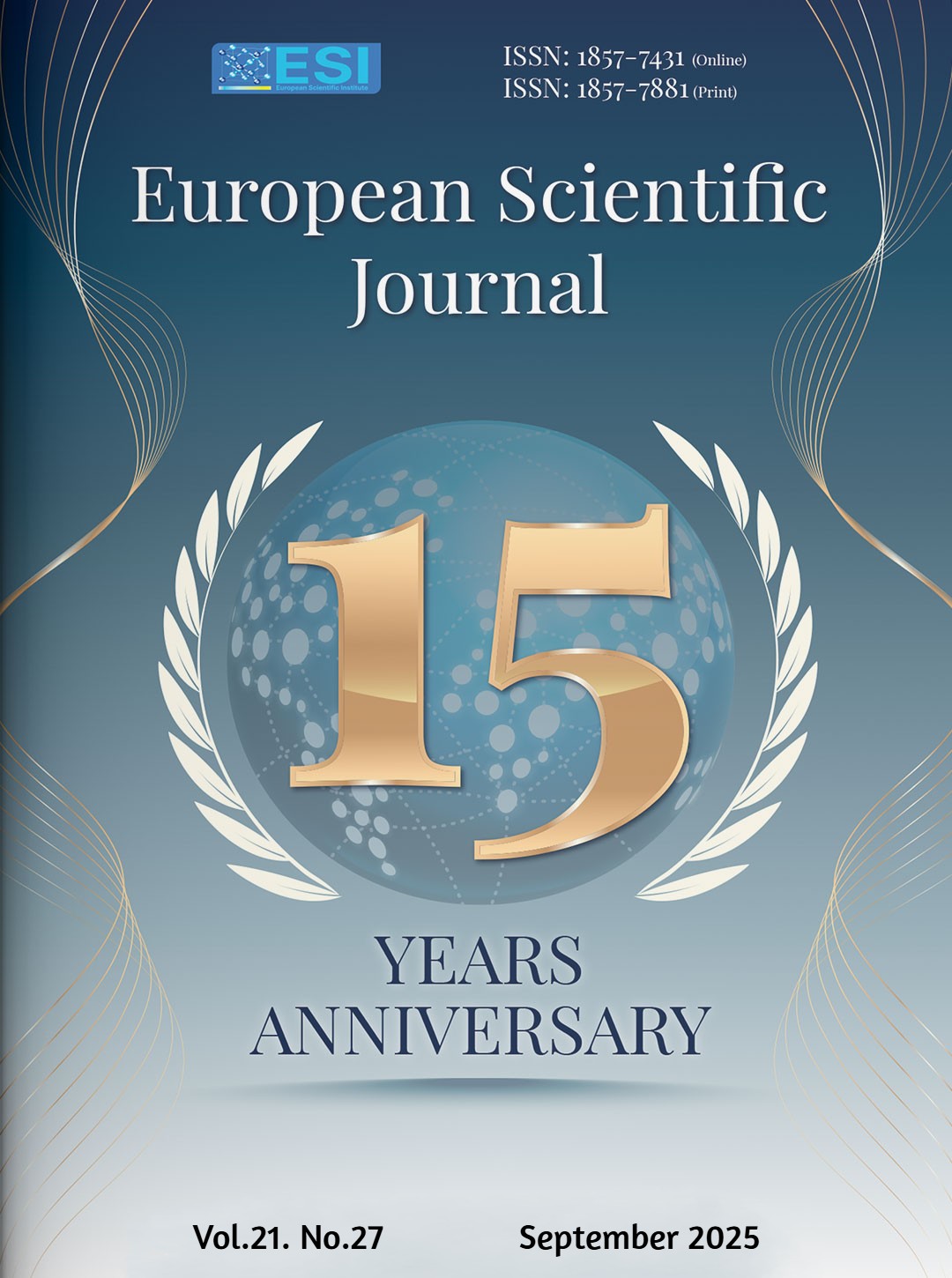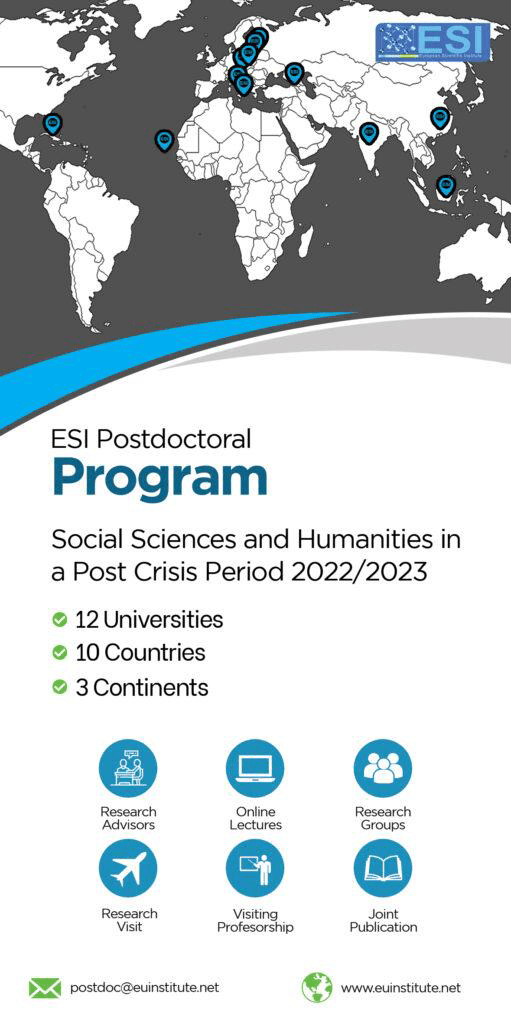The Implementation of Teaching Models and the Use of Common ICT Tools for Scientific Literacy in Greece’s Second
Abstract
Introduction: In recent decades, numerous studies conducted both in Greece and worldwide highlight the lack of student interest in the natural sciences, which contributes to a broader crisis in scientific literacy - including the knowledge, attitudes, and skills associated with it. Therefore, the search for appropriate teaching models, combined with the use of ICT in the educational process - particularly in the field of adult education, including Second Chance Schools (SCS) - has become a modern educational objective. Purpose: To study and statistically analyze the teaching approaches and ICT tools incorporated into their instruction by Scientific Literacy educators in Greece’s SCS, in comparison to their demographic and professional characteristics. Method: The research employed a structured questionnaire distributed via email to Scientific Literacy educators in SCS across Greece. The survey focused on three main research question groups. Using factor analysis, correlations among variables were explored, and the most significant ones were further analyzed using the chi-square test.
Results:
- 6% of SCS Scientific Literacy educators use the “collaborative teaching” model, with 55.3% of them aged 36–45 (p<0.01).
- The “experimental teaching” model is avoided by 76.3% of female educators (p<0.05), 84.6% of educators under 35 (p<0.01), and 100% of those with little or no teaching experience (0–3 years) (p<0.05).
- 4% of educators apply inquiry-based teaching; of these, 33.3% are second-subject educators (p<0.01).
- Of the 39.4% who apply collaborative learning, 55.3% are aged 36–45 (p<0.05).
- 7% of educators with minimal or no teaching experience do not use project-based learning (p<0.05).
- 5% of educators use computers daily, with 56.3% being second-subject educators.
- 1% do not use interactive whiteboards, 72.7% of whom are physicists, chemists, or second-subject educators (p<0.05).
- 8% frequently use the Internet, and 38.1% of those who frequently use educational software apply differentiated instruction (p<0.05).
- 7% use ICT tools primarily for lesson demonstrations. Of the 47.0% who use ICT to support traditional teaching, 67.7% apply the “traditional teaching” model (p<0.01).
- 3% of the 34.8% who use experimental teaching use ICT tools for simulation experiments (p<0.01).
Conclusion: The majority of Scientific Literacy educators in Greece’s SCS do not prefer experimental teaching and mainly use ICT tools for demonstration purposes.
Downloads
Metrics
PlumX Statistics
References
2. Bairaktari, D., & Mavrogonatos, A. (2024). Interdisciplinarity between information and linguistic literacy in Second Chance Schools. Advances in Mobile Learning Educational Research, 4(4), 639–650.
3. Chalkia, K. (2012). Didaktikí ton fysikón epistimón: Theoría kai práxi [Didactics of natural sciences: Theory and practice]. Athens: Gutenberg.Frey, K. (1998). The project method. Waxmann.
4. Frontiers in Education. (2023). Investigating interdisciplinary science teaching self-efficacy among pre-service and in-service teachers. Frontiers in Education, 8, 1147441.
5. Ganiel, U., & Hofstein, A. (1982). Development and application of a conceptually oriented laboratory in physics. Science Education, 66(2), 213–223.
6. Hodson, D. (1993). Re-thinking old ways: Towards a more critical approach to practical work in school science. Studies in Science Education, 22(1), 85–142.
7. Hurd, P. D. (1998). Scientific literacy: New minds for a changing world. Science Education, 82(3), 407–416.
8. IDEKE. (2003). Odigós spoudón scholeíon defteris efkairías [Study guide of Second Chance Schools]. Institute for Continuing Adult Education..
9. Jimoyiannis, A., & Gravani, M. (2023). Information literacy in Second Chance Schools: Views and experiences of informatics educators. Advances in Mobile Learning Educational Research, 3(2), 142–155.
10. Kariotoglou, P. (2006). Inquiry-based learning in science education. Epistimonikó Víma [Scientific Forum], 6(2), 45–60.
11. Kariotoglou, P. (2006). I Didaskalía ton Fysikón Epistimón stin Ekpaídefsi Enilíkon [The Teaching of Natural Sciences in Adult Education]. Thessaloniki: Kyriakidis Publications..
12. Katerelos, I. (1999). Collaborative learning and adult education. Open Education, 5(1), 33–47.
13. Kaziani, A., & Heliades, G. (2025). Tailoring ICT to adult EFL learners in a Second Chance School. In INTED2025 Proceedings (pp. 5612–5619). IATED.
14. Komis, V. (2004). Eisagogí stis TPE kai tin ekpaideftikí práxi [Introduction to ICT and educational practice]. Athens: Kastaniotis.
15. Koumaras, P. (1998). Experimental teaching in science education. Theoría kai Práxi stis Fysikés Epistímes [Theory and Practice in Science Education], 1(1), 33–41.Law 2525/1997. Government Gazette of the Hellenic Republic, Issue A, 188/23-9-1997.
16. Meleisea, E. (2007). ICT in teacher education: Case studies from the Asia-Pacific region. UNESCO.
17. Nicolaou, C. (2022). Information and communications technologies through technology-enhanced learning in adult education: The re-approach of the adult educator and the adult learners. In Research on Technology-Enhanced Learning in Adult Education (pp. 83–98). Springer.
18. Papathanasiou, M. (2023). Teachers as adult learners: Their need to transform. Adult Education Critical Issues, 3(1), 45–58.
19. Patapis, N. (1993). Teaching science to adults: Principles and methods. Adult Education, 2(1), 55–66..
20. Prokou, E. (2009). Adult education and social inclusion in Greece: Policies and practices. European Journal of Education, 44(1), 87–100.
21. ReferNet Greece, & Cedefop. (2024). Greece: Second chance schools study reveals strong adult education impact. European Centre for the Development of Vocational Training.
22. SciELO Brasil. (2023). Science teaching in times of pandemic: Challenges and opportunities for experimental practice. Revista Brasileira de Educação, 28, e280025.
23. Talafian, H., Komorek, M., Sommer, C., & Muckenfuß, J. (2024). Supporting physics teachers in the implementation of open-ended labs: Beliefs and practices in communities of practice.
24. Tzimogiannis, A. (2002). ICT in education: Trends and perspectives. . Epistimonikó Víma [Scientific Forum],, 2(3), 15–28.
25. Tzampazi, A., & Seroglou, F. (2023). The 2CHANCE model: A proposal for scientific literacy in Second Chance Schools. Adult Education Critical Issues, 3(2), 21–39.
26. Tobin, K., Tippins, D. J., & Gallard, A. J. (1994). Research on instructional strategies for teaching science. In D. L. Gabel (Ed.), Handbook of research on science teaching and learning (pp. 45–93). New York: Macmillan.
27. Willis, S., & Mann, L. (2000). Differentiated instruction: An innovative pedagogical approach. Journal of Curriculum Studies, 32(2), 237–247.
28. Xepalti, A., Sergounioti, D., & Koulianou, M. (2011). ICT use in adult education: The case of Second Chance Schools in Greece. Open Education, 7(1), 57–72.
29. Zepke, N., & Leach, L. (2006). Improving student outcomes in adult literacy and numeracy programmes: A synthesis of research. Educational Research Review, 1(2), 99–118.
Copyright (c) 2025 Vasiliki Trapali, Effie Papageorgiou, Christina Fountzoula, Petros Karkalousos, Maria Trapali

This work is licensed under a Creative Commons Attribution 4.0 International License.








